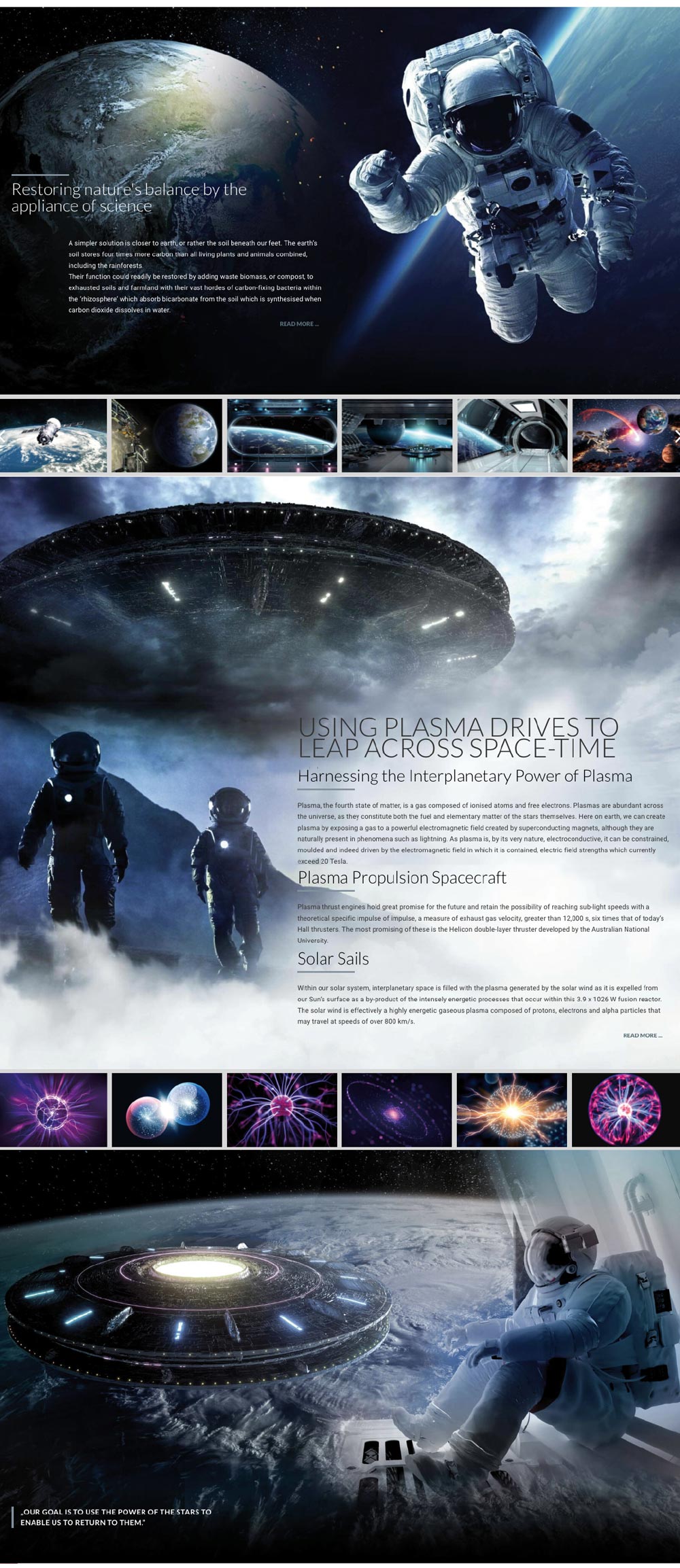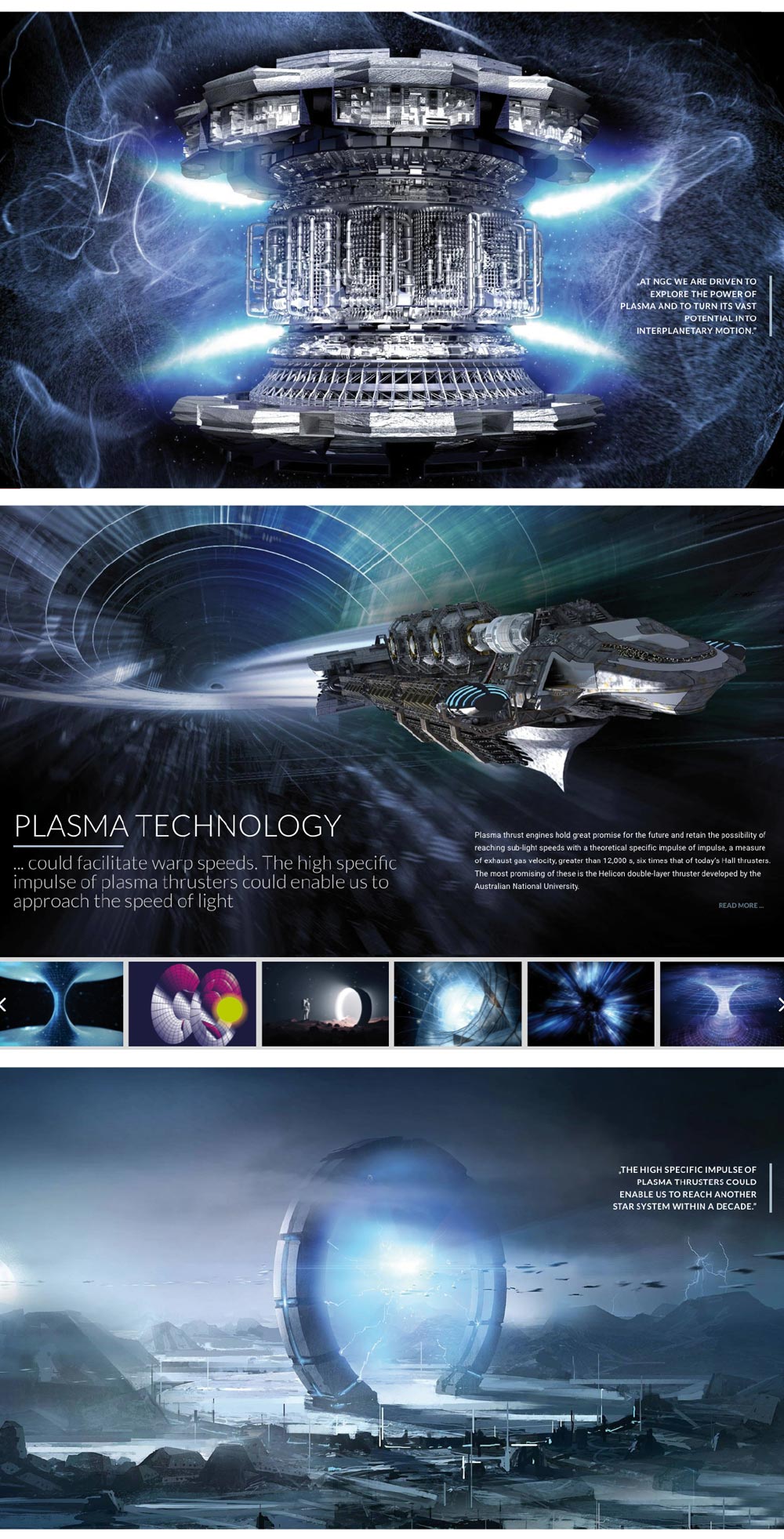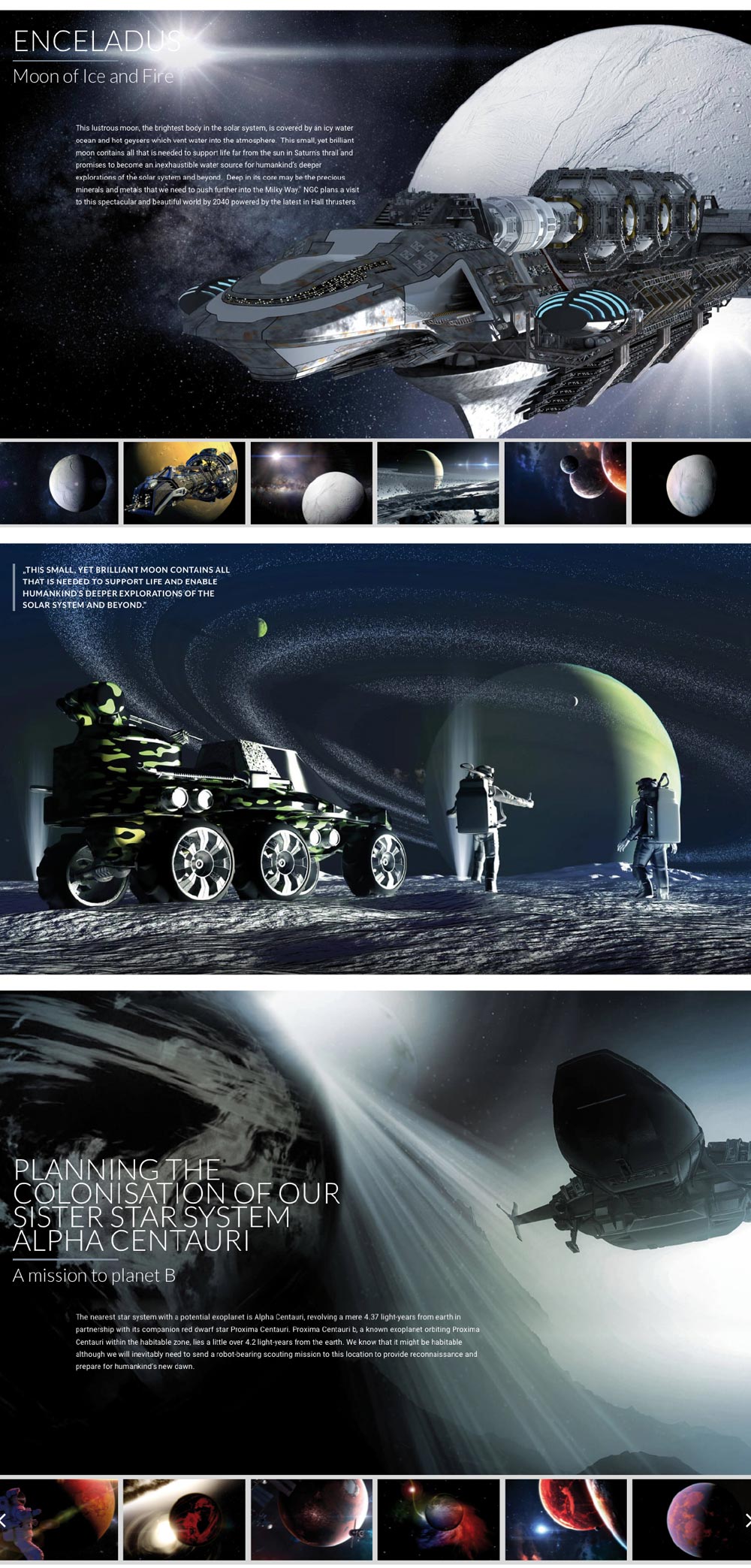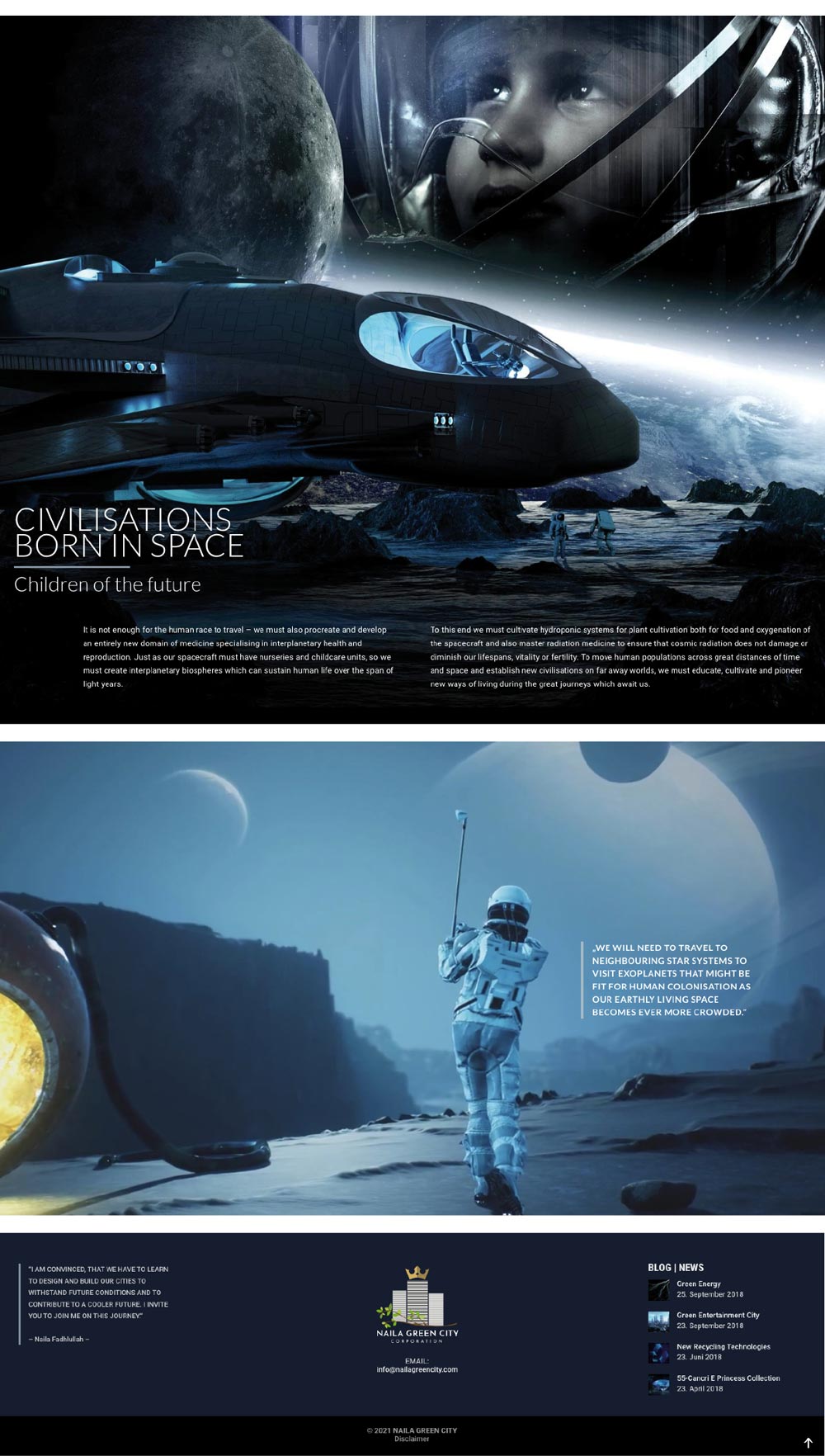Rather than retracing our footsteps to the Moon and Mars, we will use today’s cutting edge technology to chart a route to the stars and to boldly chart the next stage of humankind’s evolution to explore beyond the confines of our own solar system.
NGC - INTERSTELLAR TRAVEL (UK/MC)
SCREENDESIGN | ARTWORK | REALISATION (WORDPRESS WEBSITE)







TERRAFORMING EARTH
Applying biochemistry to resurrect a dying planet
Radically reversing the degradation of the Earth’s oceans and atmosphere is not the daunting and insurmountable challenge that many in the media believe. Using natural chemistry, we can simply absorb the issue of carbon dioxide levels by fixing the carbon using the earth’s natural processes. Through a simple combination of rewilding, managed grazing, carbonic acid fixation and engineering vast bacterial and phytoplankton colonies we can readily reverse the process of fossil fuel oxidation.
Over the past three hundred years, our collective industry has resulted in over 2,000 Gigatons of carbon dioxide entering the atmosphere, equivalent to the combined mass of over ten million skyscrapers.
While reforestation is an ideal solution this is far from straightforward as it often involves the loss of farmland and would require generations to achieve even if temperate forests could sequester some three metric tonnes of carbon dioxide per year. By managed grazing alone, vast tracts of semi-arid plains and deserts could be restored to their former status as grasslands. If only a third of these were rewilded we would restore atmospheric carbon dioxide to pre-industrial levels.
While there are complex and costly engineering solutions for carbon capture, there are simpler, faster and more cost-effective strategies for carbon capture using the earth’s natural chemistry. Again, taking advantage of carbon dioxide’s great solubility in water (and seawater) we can accelerate the rate at which bicarbonate (the product that is warmed when carbon dioxide reacts with water) is petrified by injecting it into rocks in mines where it reacts with calcium to form calcium carbonate (which we know as limestone, chalk or marble), although shell-forming sea creatures greatly accelerate this process of calcification.But what of the issue of rising methane levels? Here nature’s chemistry also comes to our aid, as we seek to harness the power of methanotrophic bacteria that use methane as their source of fuel. Just as the vast colonies of cyanobacteria that originally oxygenated the Earth’s atmosphere did before, we can call on microflora and microfauna once again to restore balance to nature. Through our technological know-how, we can make all of this happen for a fraction of the cost of the consequences of climate change.




